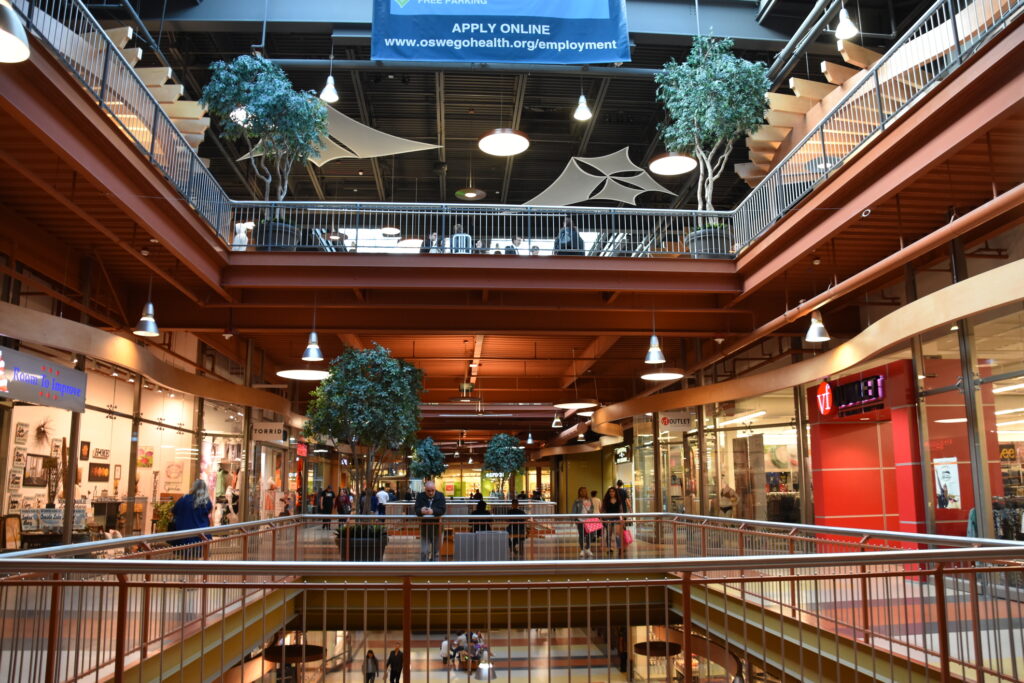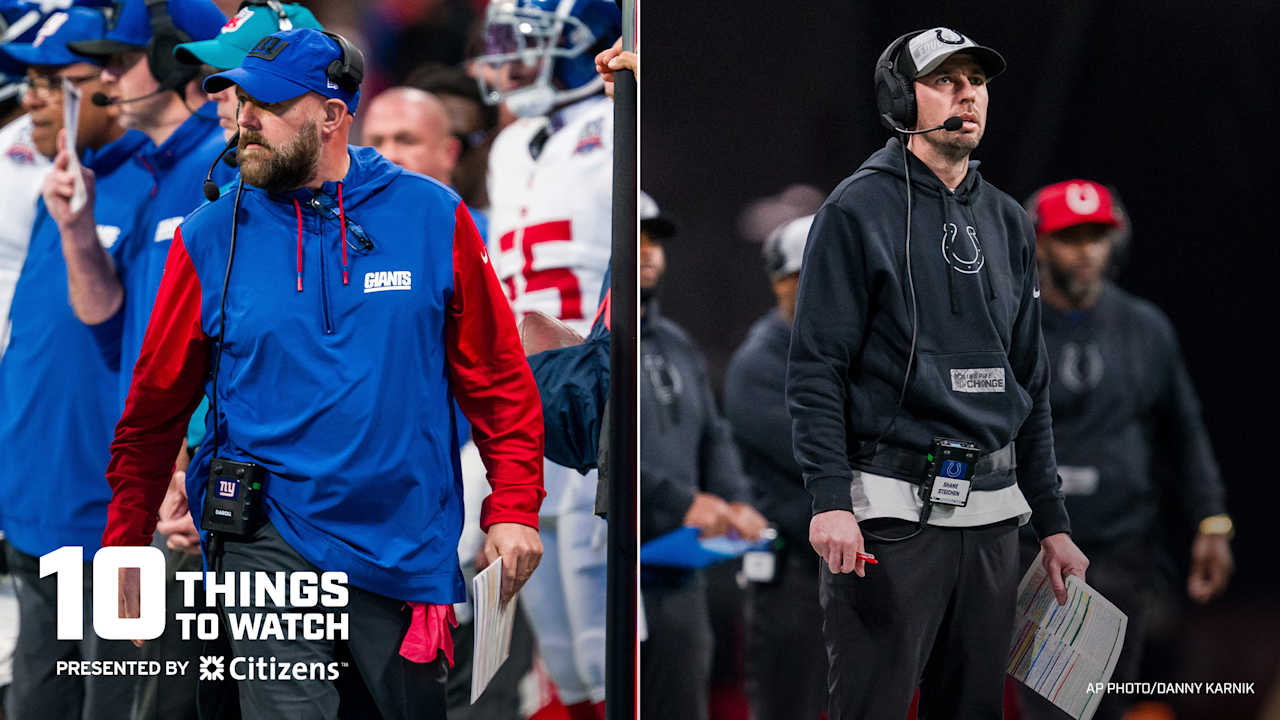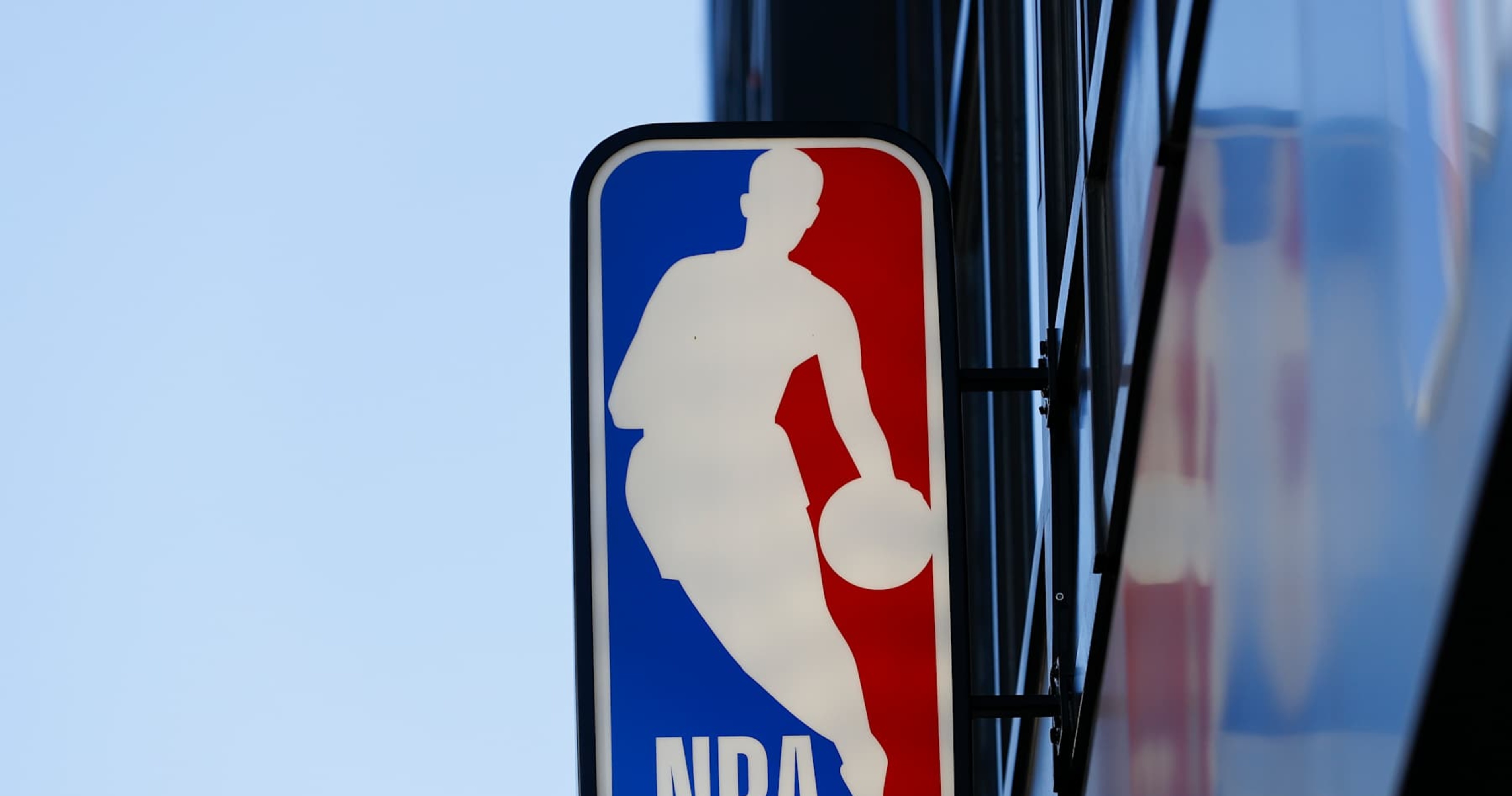Infra
Q&A: Transpo Prof Talks NYC vs. Bay Area – Streetsblog San Francisco
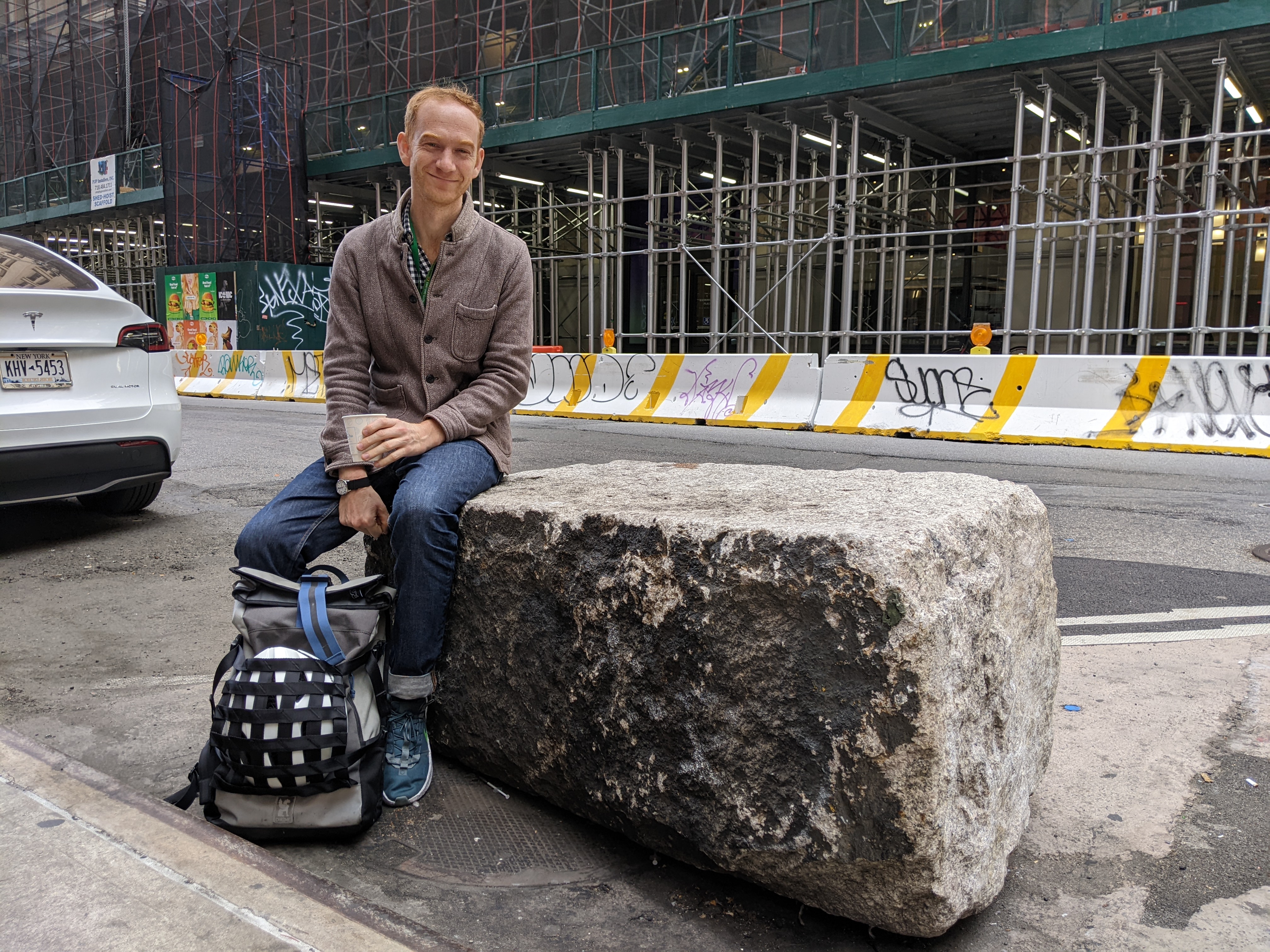
During this month’s Transportation Alternatives Vision Zero Cities conference in New York, we caught up with Marcel Moran, a Streetsblog contributor and PhD graduate from U.C. Berkeley’s Department of City and Regional Planning. Currently, he’s doing a two-year stretch teaching at New York University’s Institute of Transportation Studies. We asked Moran about his time away from the Bay Area and what lessons can be learned from the Big Apple and its relative success at addressing traffic violence.
***
Streetsblog: So how’d you go from Berkeley to New York University?
Marcel Moran: At the close of my PhD I was looking for opportunities to remain in academia, teach, and conduct research on cities. The two-year faculty fellowship here lets me pursue independent research projects, collaborate with everyone at NYU, and teach graduate students in their master’s curriculum.
SB: Research projects such as the crosswalk study, which we wrote about?
MM: Exactly. The cherry on top of the job is I get to live and research here in New York City, which has always been a dream. I’ve already done two projects, the other was about speed cameras and mining speed camera data. New York has the biggest speed camera set up in the United States.
SB: The Super Speeders study. What did you learn from that?
MM: The speed camera program has been successful, but there’s a small wrinkle in the enforcement in that there’s no upper limit in terms of number of speed-camera violations. And there’s no possibility for license suspension, no matter how many tickets you get.
SB: Are these rich people in sports cars who just don’t care about the fines?
MM: It’s the lack of an enforcement mechanism. The system works for the vast majority of drivers who pay the fines, but there’s a number who don’t pay the fines. And then nothing happens to them.
SB: So they never impound the car involved no matter how many violations or how much over the speed limit?
MM: Nope.
SB: Why? Misplaced equity concerns?
MM: There was a short-lived program called the Dangerous Vehicle Abatement Program, or DVAP for short, where they impounded the cars. But that was discontinued.
SB: So you just speed, don’t pay the fines, and speed more?
MM: Some drivers are getting over 100 speed camera violations per year.
SB: Jesus.
MM: On average the program reduces speeding, but there are extreme recidivists, who I call “Super Speeders.”
SB: That came up in the conference. Yes, we don’t want to depend on police enforcement alone, but you need some enforcement, because of these edge cases. Seems as if we’ll have the same problem in San Francisco.
MM: Speed cameras are still an improvement over not having a speed camera program. Don’t throw out the baby with the bathwater; let’s adjust the dials. Meanwhile, NYC is about to expand their red light cameras from 150 to 600 cameras.
SB: Right. That also came up in the conference—that saturating the city with speed and red-light cameras really does control behaviors. That is, with your caveat that you also need enforcement to deal with the extreme edge cases. So let’s talk about your impressions of streets in New York versus the Bay Area.
MM: There are big differences in the day-to-day travel experience in New York versus San Francisco. San Francisco has created more inviting streets in more neighborhoods, in terms of outdoor dining, traffic-calmed intersections, and bike infrastructure.
SB: San Francisco has?
MM: I think so. For example, San Francisco’s outdoor dining has proved more durable and inviting to merchants. New York modified its parklet program so it’s no longer twelve months a year, so it will sunset for winter every year. That severely decreases the incentives for restaurants to invest in the infrastructure.
SB: So they remove the parklet every winter? No wonder. Is that normal in cold climates?
MM: In Vienna and Paris the programs are seasonal. It’s possible. You just create a much simpler structure that is easier to disassemble.
SB: Like just an awing with chairs?
MM: Or a very simplified connected structure. But that all removes the chance for specialization, craftsmanship, and the kind of idiosyncratic parklets that have made San Francisco streets more creative and diverse, from the Mission to Noe Valley to North Beach.
SB: This isn’t mainly about the weather?
MM: No. I think it’s just New York’s short-sighted approach to one of the best things that came out of the pandemic, the street-dining programs. They have some warm days here even in the winter. As long as it’s not pouring rain or snowing, people wanted to see streets as more than car storage. So the program is being winnowed by about ninety percent because of merchants who have not renewed for a seasonal rather than permanent parklet. It’s one thing San Francisco really did get right, in terms of assuring that as the pandemic recedes they don’t lose the outdoor dining. In fact, San Francisco has used the momentum of the pandemic to lock in benefits, such as Slow Page Street, Slow Sanchez Street, car-free JFK. And, I hope, now the Great Highway.
SB: But New York has held onto some things too from the pandemic, no?
MM: Yes. New York has more pedestrianized streets. More daylighting. Good things happening in both places, but outdoor dining and slow streets are more prominent in San Francisco.
SB: To move onto a more obvious difference, New York has a much, much more expansive rail transit system.
MM. New York’s subway system is far more extensive than BART. But both cities are effectively prioritizing bus transit on our streets. This also stands out with San Francisco, with the Van Ness BRT for example, which is a dramatic signal to drivers on the prioritization of travel time.
SB: Meaning that on Van Ness Avenue the bus—the vehicle with the most people—gets priority?
MM: Right.
SB: What else shows that?
MM: Car-free Market Street predates the pandemic. And San Francisco has continued to make improvements on western corridors such as Geary. The SFMTA board and Jeffrey Tumlin’s leadership has resulted in a public realm that is far more encouraging to non-car travel.
SB: What else?
MM: Both cities have bike share, but San Francisco has done better with other micromobility options. San Francisco is more nimble with dockless scooters and bikes.
SB: New York is making some progress on Vision Zero. San Francisco isn’t. I can’t help but think that has to do with all the granite, concrete, and cast-iron installations I see.
MM: San Francisco must move away from soft-hit-post-and-paint-only daylighting. That’s just inadequate for driver behavior. One of the most successful materials New York has used for maintaining daylighting are rocks—huge pieces of rock. The best city planning is low tech, in this case putting in rock slabs and planters that drivers literally can’t drive over.
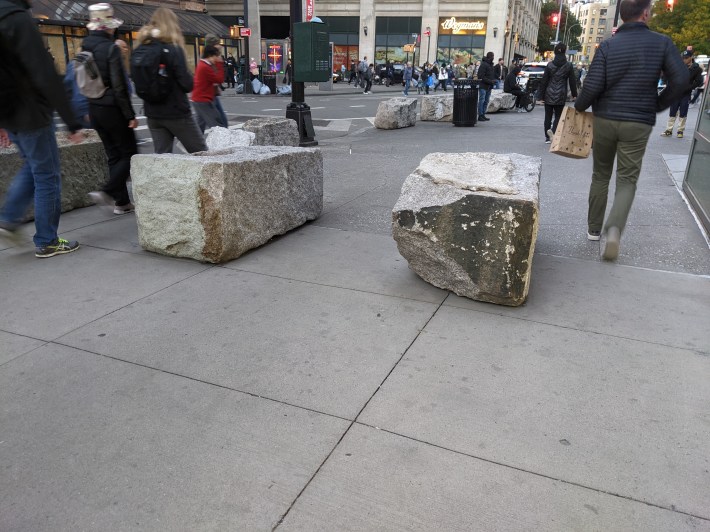
SB: But San Francisco continues to use plastic.

MM: If you think about the new bike lane on 17th Street in San Francisco, it just has soft-hits posts. And they’re run over by cars and they degrade. For the person relying on that infrastructure you feel vulnerable.
SB: Because you are vulnerable. You spent some time in Paris too. They’ve certainly used the right mix of soft materials and concrete and steel to protect bike lanes.
MM: I was there in 2020. Paris used the pandemic to their benefit. Overnight they added staggered concrete slabs and soft-hit posts to demarcate new bike lanes. In many cases they are also wider and bidirectional, so you’re creating not just protected infrastructure, but creating whole new routes for cycling. Paris has also been quietly removing parking. SFMTA, on the other hand, is not leading with parking removal.
SB: You can say that again.
MM: Another strength for Paris has been a standardization of bike facilities from arrondissement to arrondissement. They’re starting to get a kind of uniformity of quality and design to let drivers and cyclists know what to expect.

SB: Right. In San Francisco everything changes district by district. That was one of the big problems with the center-running lane on Valencia. Even if it was going to work, the constant changing of bike facilities makes things dangerous and difficult to use.
MM: Paris has consistency in signage, lane-width, et cetera. San Francisco also has a number of really good protected lanes. A good example is on the Embarcadero or in the Presidio. But they need to expand.
SB: I noticed in my old neighborhood in northeastern Queens, there aren’t any protected lanes. Basically nothing has changed. Is that something both the Bay Area and New York have in common, that the more suburban neighborhoods are neglected when it comes to bike infrastructure?
MM: Both cities need to expand beyond commuter routes. American transportation planners traditionally prioritized male-coded trips, as opposed to female-coded trips such as child care, domestic labor, and school travel. You can see that in our concentration of bike infrastructure, where it’s less present in residential areas. Both cities could use a bicycle-boulevard approach to improve safety and vibrancy in residential areas. I’m thinking of the Avenues in San Francisco. They should add modal filters to these blocks. That would dramatically increase bikeability in the Sunset and Richmond districts. They’re ideal districts for slowing the circulation of cars and creating bicycle boulevards. That would have the added effect of encouraging child play space and for socializing with neighbors.
SB: Do you miss the Bay Area?
MM: Absolutely. I think the Bay Area has an incredible mix of dense urbanism, multi cultural surroundings, and unbelievable nature and outdoor activities. San Francisco is constantly improving, but it already has such vibrancy in its residential neighborhoods in the wake of COVID. You’re seeing new businesses, vibrant streets, farmer’s markets. And it’s on the cusp of enacting more car-free space like the Great Highway Park. I think the SFMTA’s board and leadership are aligned on a safer, greener, and more multi-modal street network.
This Q&A was edited for length and clarity.



